Insulin is a natural hormone that is secreted by the pancreas in two different ways. The first way, called ‘basal insulin’, is a constant secretion of the hormone at a low level. The second way is called ‘bolus insulin’. This happens when we eat, and the pancreas secretes surges of insulin to help transport the sugar that we eat into our cells. When we consider insulin therapy as an injectable hormone for people with any type of diabetes, we need to think about both functionalities.
The human insulin molecule, whether it is secreted by the pancreas or injected artificially through the vein, stays in the blood for about 15 minutes. However, when it is injected under the skin it lingers for about 6 hours. This may be too long for the meal coverage, and yet not long enough to cover the entire day. For this human insulin to work longer, it is possible to add a protein called protamine, in addition to zinc, so that the duration of action for the human insulin can be protracted enough to cover about half of a day. This type of insulin is called NPH.
For years, different formulations of human insulin have dominated the market. Then, something called ‘designer insulin’ was developed. Designer insulin molecules are genetically manipulated to allow the insulin to work either faster than regular insulin or longer than NPH insulin. Studies have shown that designer insulins offer some advantage mainly in preventing hypoglycemia (low glucose).
Because of this, for people who use what we call basal-bolus insulin therapy, therapy that includes both long-acting insulin once a day and rapid-acting insulin with meals, it can be beneficial to use designer insulins. On the other hand, most patients with type 2 diabetes can do just as well with a simple insulin regimen that includes two daily injections of pre-mixed, or biphasic, insulin. This pre-mixed insulin is a combination of faster activity to cover a meal and half day activity to cover the basal insulin needs. Studies have shown that when using this regimen, there is no clear clinical advantage for designer insulins compared to human insulins. There is, however, a major difference in price. Today, designer insulin can cost as much as 10 times more than human insulin.
In summary, most patients with type 2 diabetes can do very well with less expensive, pre-mixed insulin 70/30 or 75/25. However, regardless of the insulin type, the most important factor in insulin therapy with respect to effectiveness and safety, is the frequency of dose adjustments. Insulin is the most dynamic therapy in medicine. To use it safely and effectively, insulin dosage adjustments are needed at least weekly.


